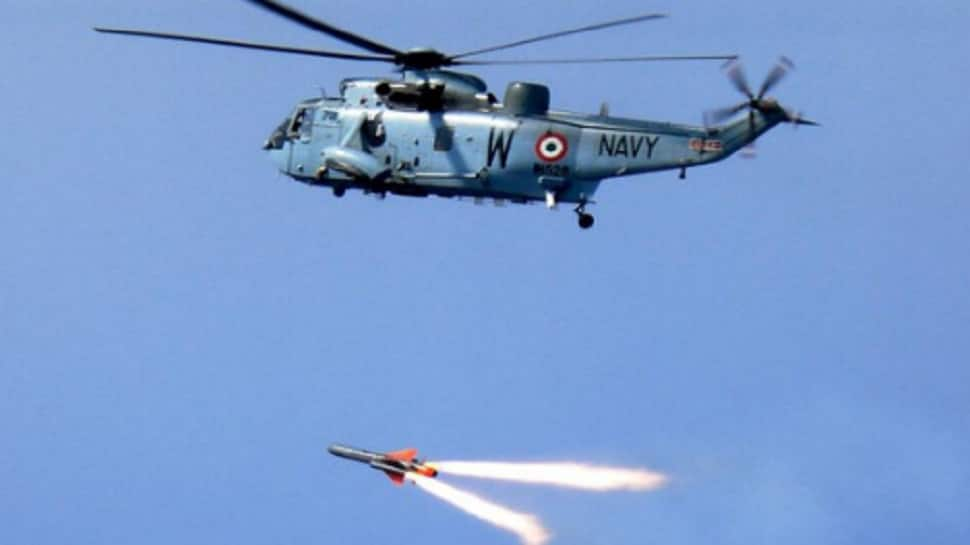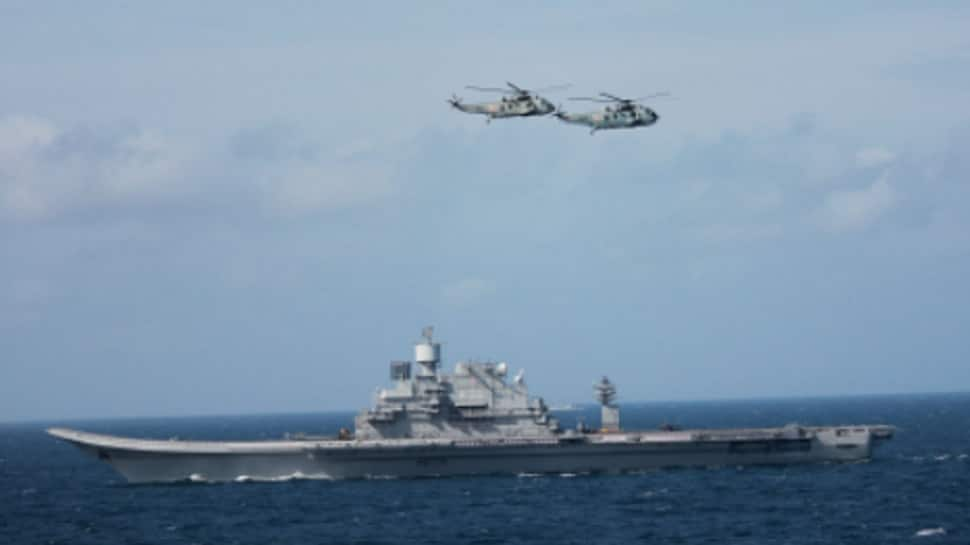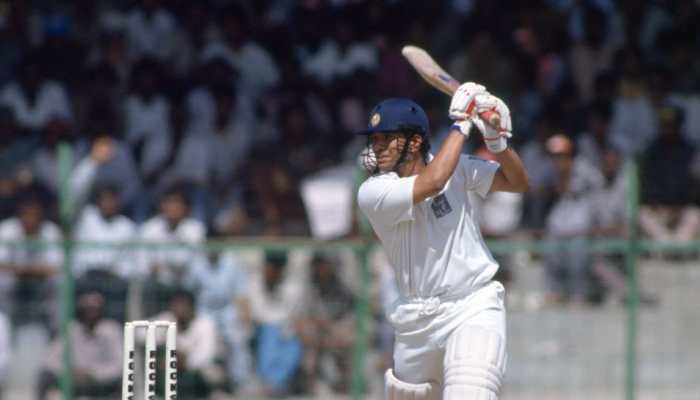Indian Navy’s Sea King Mark (Mk) 42 ‘Harpoon’ helicopter turns 51, a look at brief history
Indian Naval Air Squadron (INAS) 330, ‘Harpoon’ helicopters increased the navy’s anti-submarine capabilities turned 51 on April 17.
- INAS 330 Harpoon helicopter turned 51 on April 17, 2022
- The squadron began operating the Sea King Mark (Mk) 42 Anti-Submarine Warfare helicopters
- Sea King helicopter is a multi-role helicopter and has been used for all-around surveillance
Trending Photos
) Image Source: pib.gov.in
Image Source: pib.gov.in 51 years ago, the Indian Naval Air Squadron (INAS) 330, popularly known as the ‘Harpoons’ was commissioned on April 17, 1971 with a motto, ‘Any Sea, Any mission, Any deck.’ As the Indian Navy seeks to induct MH60R, a modern and very capable multi mission helicopter, the Harpoons are all set to begin their third avatar. The squadron began operating the Sea King Mark (Mk) 42 Anti-Submarine Warfare helicopters acquired from British Westland Helicopters -- equipped with dunking sonar and lightweight air-dropped homing torpedoes.
These helicopters increased the navy’s anti-submarine capabilities significantly. INAS 330 has its origins in the developments that followed helicopters being optimised into advanced roles for detecting and attacking submarines. Apart from that, advanced Navies also developed the capabilities to operate such helicopters from helicopter-capable surface ships.

‘This led to INAS 330 to operate from India’s lone aircraft carrier INS Vikrant in 1971’ says, Rear Admiral Sudhir Pillai, NM (Retd), a fully operational pilot and a flying instructor on all marks of Sea King and had also commanded the Indian Navy’s Marine Commando flight.
The Sea King helicopter is a multi-role helicopter and has been used for all-around surveillance, search and rescue operations, warfare, and as a transportation platform for the last several decades. The first Sea King landed on INS Vikrant, the first aircraft carrier of the Indian Navy in July 1971. ‘Though inducted into the Indian Navy a few months before the Indo-Pakistan war of 1971, Sea King operations were restricted during the war given certain training shortfalls,’ says Pillai.
However, Sea King did pick up a suspected submarine contact and carried out a vectored attack for the first time in Nov 1971. Besides this, extensive operations were also undertaken, and the Harpoons clocked over 156 hours of the war effort.
Also read: China Eastern Airlines restart using Boeing 737-800 plane after March crash
Post war, the Indian Navy worked tirelessly to adapt, integrate and understand the full potential of the Sea King helicopters. The decade following the 1971 war, the Indian Navy carefully charted out options for all the upgradation of military equipment. “The aircraft was to be equipped with state-of-the-art weapons, communication systems, navigation systems, torpedoes, depth charges, radar, tactical Air Navigation and certain modifications that included an additional tail rotor blade to overcome certain aerodynamic limitations,” said Pillai.
He further added that “INAS 330 had pioneered such adaptations and heralded a legacy that now has been extended to India operating helicopters from smaller platforms like the Taragiri- and Godavari-class frigates and follow-on ships of the Brahmaputra, Delhi and Kolkata class.”
Between 1988 and 1990, the Sea King MK 42B (Bravo) arrived in India. The core team was deployed to the UK for almost five years of extensive training of over 30 aircrews and an adequate ground crew. Sea King 42B are known as the Flying Frigates, as they could do almost anything the frigate that carried them could do.

Due to the massive coverage of its radars, the Arabian Sea became a pond for the Indian Navy,` said Commodore G. Prakash, NM (Retd), a specialist in aviation and anti-submarine warfare.
India's nuclear test in 1998 brought on the US Sanctions. Due to this, maintenance support for the Sea King became negligible. The Harpoons had a challenge to not only continue flying but also experiment, adapt, reorient, and add on several pieces of equipment to continue to remain operationally credible.
Rear Admiral B.S. Parhar shares that when he took over the command of INAS 330, there was only one functional aircraft available with the squadron due to various limitations. Even then the Harpoons continued to execute incredible rescue missions, delivered supplies to disaster-hit areas, and provided service beyond their logical capabilities. The Harpoons were also known to be the ‘Best Frontline Squadron’ and ‘Best Naval Air Squadron’ of the Indian Navy.
Also read: Indian Railways to soon deploy Vande Bharat Express trains on Delhi-Khajuraho route
With the missile-age dawning, the anti-submarine helicopter was further evolved for anti-shipping roles with advanced maritime radars, electronic support, and intelligence suites. This role pioneered by INAS 330 has evolved the Indian Navy into becoming one of the most advanced Navies of the world.
“One important change that the Seaking MK 42Bs brought into our Fleets was a quantum jump in the size of the areas which we marked out for our exercises. The excellent ESM system onboard would pick up far away ‘enemy’ contacts even as aircraft were still on deck, ready for launch. This, combined with the capabilities of the Sea Eagle missiles of the 42Bs, brought in massive standoff ranges, at which the Indian Navy was confident of dealing with the enemy,” said Commodore G. Prakash (Retd).
(With inputs from IANS)
Stay informed on all the latest news, real-time breaking news updates, and follow all the important headlines in india news and world News on Zee News.
Live Tv







)
)
)
)
)
)
)
)
)
)
